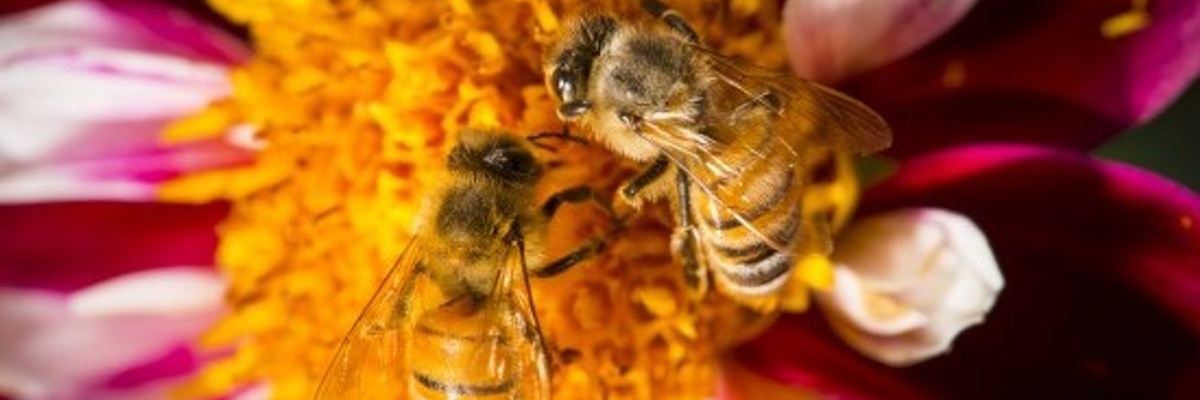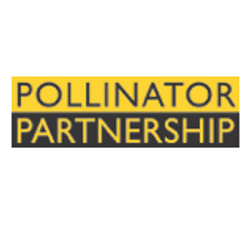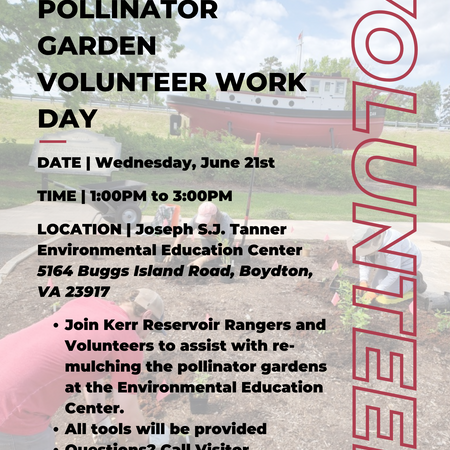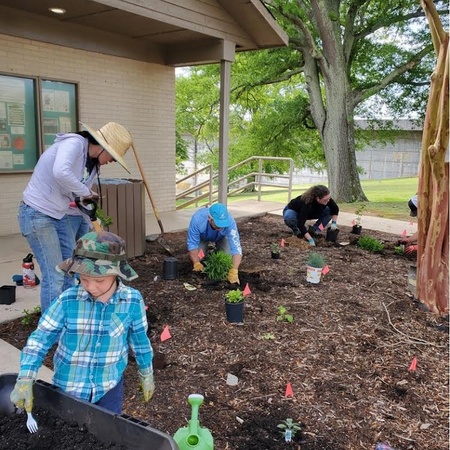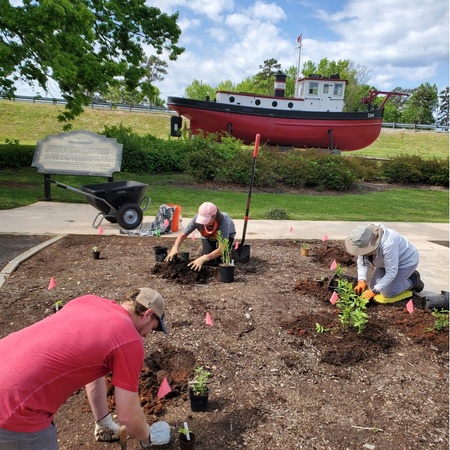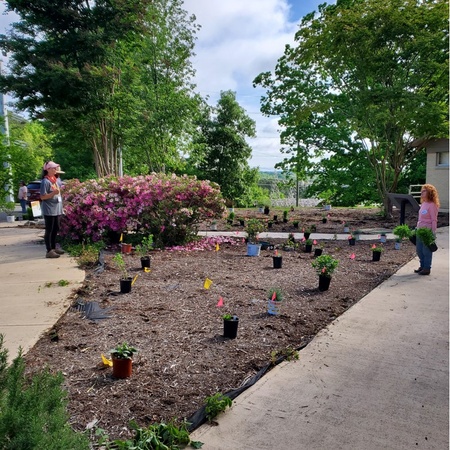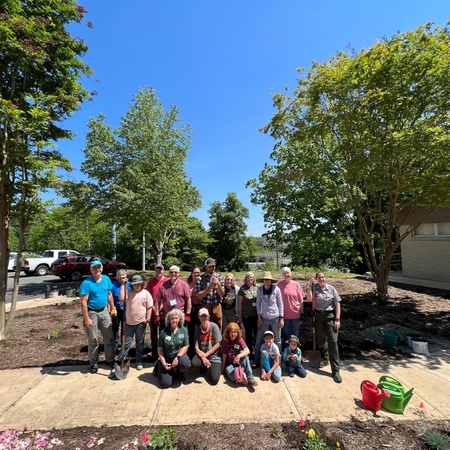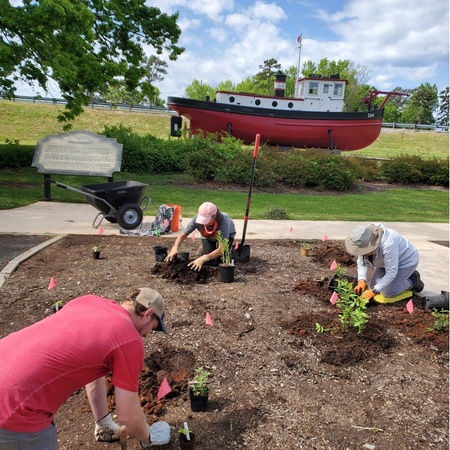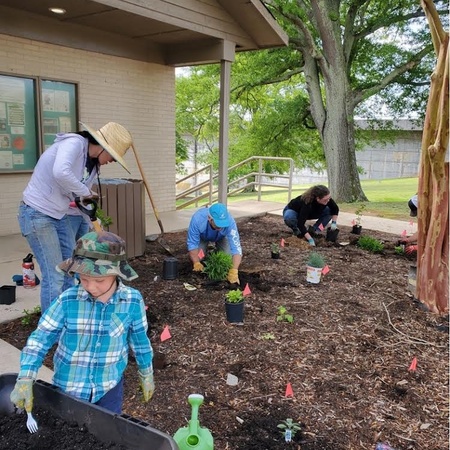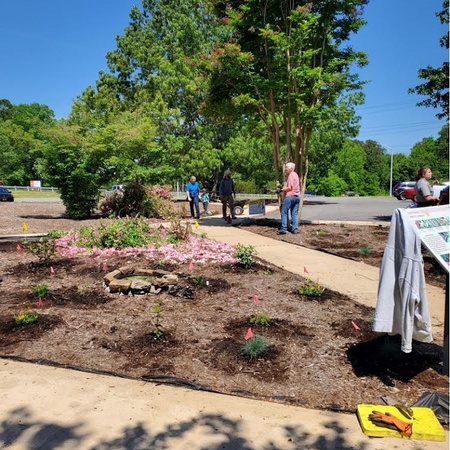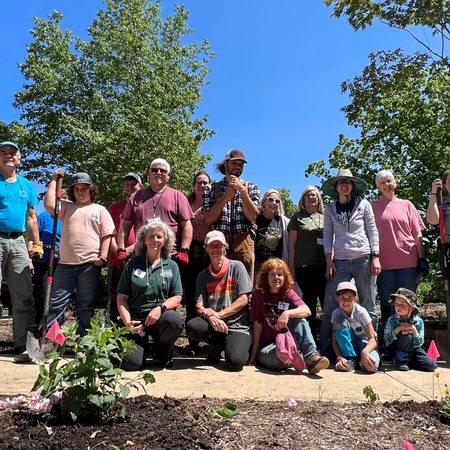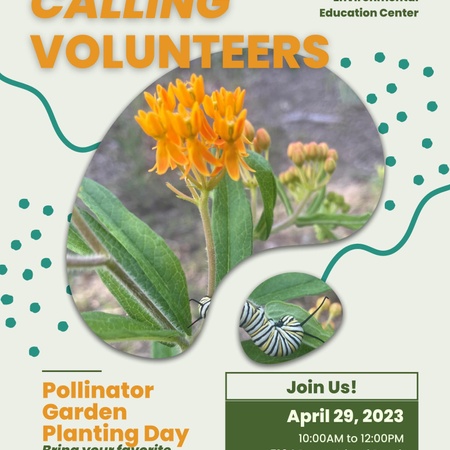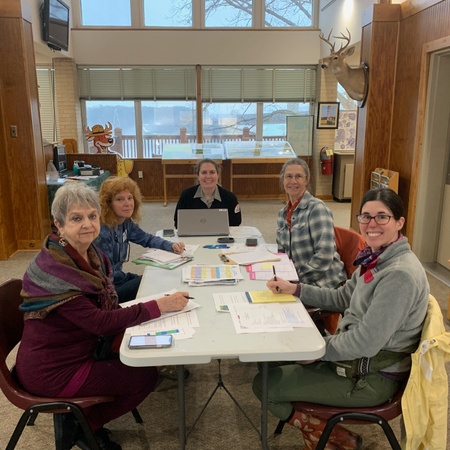Action plan:
Timeline: When will you be able to start your project? How often will your team meet? Are there any key dates to share for the project?
The Pollinator Partnership Tanner Center Team has already begun the planning and organizing process of this project. Currently, the team is meeting twice a month to plan and make decisions regarding the pollinator garden. More specifically, the team is already meeting regarding which plants we will purchase, garden design, irrigation system design, etc. The team anticipates beginning the planting
process in March and continuing through May. This project is taking place at and in partnership with John H. Kerr Dam and Reservoir’s (U.S. Army Corps of Engineers) Tanner Environmental Education Center where the team is actively meeting and making decisions. Planting dates will depend on the local weather conditions, but the team is collaborating with John H. Kerr Dam and Reservoir to organize and leverage the local school systems, community groups, and volunteers to assist with planting days this spring. The Pollinator Partnership Tanner Center Team consists of Virginia Master Gardeners, Virginia Master Naturalists, and an U.S. Army Corps of Engineers Natural Resource Specialist. The breadth of knowledge and motivation shared by this team is already bringing this project to fruition and will ensure the long-term sustainability of the project.
Budget: You don't need to share exact prices, but please share how you're planning to spend the seed funding & what costs you're anticipating to get your project up and running:
The initial funding ($1,260) will go towards a soil test, soil amendments (i.e., organic compost), and locally sourced native pollinator plants. Since the pollinator garden is located at the Tanner Environmental Education Center an U.S. Army Corps of Engineers site the pollinator garden will consist of only native, locally sourced plants that will thrive in this site-specific ecosystem. The basic structure of the pollinator garden beds already exists and so most of the initial project cost will be the plants
themselves. The pollinator garden will consist of multiple beds totaling an estimated 3000 square feet of space. Plants purchased will meet the requirements for a successful pollinator garden including diversity of plant species, which will bloom and fruit for at least 9 to 11 months of the year and provide nesting habitat for the region’s native pollinators. The plants will be a variety of heights, planted in groups, and
designed in an appropriate manner. Examples of plants that will be purchased include (common names) common milkweed, butterfly weed, coneflowers, mountain mint, smooth oxeye, eastern narrowleaf sedge, and more.
The remaining portion of funding will go towards any additional tools and irrigation system needs to care for the pollinator garden long-term. Additionally, John H. Kerr Dam and Reservoir fully supports this project and is working in tandem with this Change X Tanner Center Pollinator Partnership Team to assist with a tool storage system, a successful irrigation system, and any other onsite-specific needs to ensure the longevity and sustainability of this project.
Impact: How will your community benefit from this project? Do you have any measurable goals for your project, such as the number of people that will participate? Are you hoping to spread knowledge or increase interest in a specific subject?
The Pollinator Partnership Tanner Center project will benefit the community by providing a free and accessible place to interact with and learn about the importance of native pollinators and how others can start a native pollinator garden. Essentially, this pollinator garden will be an educational community-oriented pollinator garden. This project team is already coordinating with John H. Kerr Reservoir Park Rangers, local school systems, and community groups to assist with planting and maintenance.
Organized workdays will bring community members into the gardens physically and will also serve as opportunities to for this team to share information and resources about how others can support native pollinators. The team has a goal of involving at least five other community groups and/or school clubs with the pollinator garden process this year. The team also has a goal of building a resource for creating
pollinator gardens in the Southern Piedmont of Virginia with this pollinator garden as an example.
This pollinator garden is located at the Joseph S.J. Tanner Environmental Education Center at John H.Kerr Dam and Reservoir (U.S. Army Corps of Engineers). John H. Kerr Reservoir consists of numerous public recreation areas, and the Tanner Environmental Education Center is an accessible space that is free and open to the public. In the 2022 calendar year the Tanner Environmental Education Center was
visited by over 2000 individuals through public visitation and structured programs with local schools, camps, and community groups. Selecting this location for the pollinator garden project means that the garden will be an education tool for structured programs and a place for the public to explore as they visit the space. There are four pollinator garden beds totaling almost 3000 square feet with accessible sidewalks already in place around the beds to ensure that visitors and program participants will be able
to truly interact with the different plants, visiting pollinators, and the pollination process.
The Pollinator Partnership Tanner Center Team anticipates organizing and facilitating structured programs, signage, and educational materials (i.e., interactive brochures) about a variety of topics associated with this pollinator garden project. Program and material topics the team is interested in including pollinators as a keystone species, native pollinator plants, seed saving, how to start planning a pollinator garden, pollinator habitats, pollinators and the food web, etc.
Location: If your project requires physical space, have you decided the location? Do you have all necessary permission and permits to carry out your project at the chosen location?
The location of this project is at the Joseph S.J. Tanner Environmental Education Center at John H. Kerr Dam and Reservoir (U.S. Army Corps of Engineers). By working in concert with John H. Kerr Dam and Reservoir the initial structure of the pollinator garden beds (estimated 3000 square feet) is already in place, which will allow the funding to be directly put towards purchasing plants, planting, education
goals, and long-term care of the space. This team has all the necessary permission and permits to carryout this project and is in constant communication with the John H. Kerr Reservoir Park Rangers and staff.

